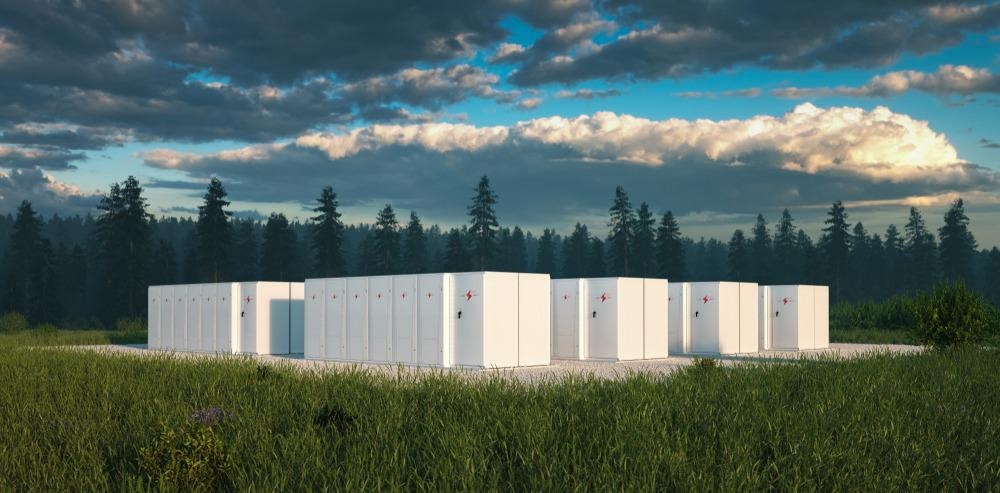
Image Credit: petrmalinak/Shutterstock.com
Recent reports show good progress on what will become the largest battery storage facility of its kind. It will boast capacities of 182.5 MW and 730 MWh when completed in 2021. The facility’s success is essential: battery storage projects will be critical to cleaner technology approaches to the energy and climate crises in coming years.
Energy Storage for the Climate Crisis
Clean, renewable energy is abundant in nature. But, to harness and distribute it efficiently enough for the modern industrial world's demands, we need to manage it through efficient storage.
Advancing our energy storage and distribution capacity will enable us to capture and use renewable energy as efficiently as possible. Used as electricity, this energy can also be consumed much more cleanly, with less pollution.
The critical role of energy storage projects in tackling the climate crisis, particularly battery storage systems, is becoming widely recognized.
Many will be looking at the Moss Landing project's success as a critical indicator of how massive battery storage projects can help us manage renewable, cleaner energy, and effectively tackle the climate crisis.
Latest Progress at Moss Landing Site
US utility PG&E –a joint investor in the project- Tesla and others, announced the first Tesla megapacks had arrived at the start of October 2020, two months after they broke ground on the site.
Tesla is supplying 235 megapacks to the facility in total. Each Tesla megapack unit – a large, container-sized battery – boasts 3 megawatt-hours (MWh) storage capacity and can be connected to other megapack units to scale up to a gigawatt-hour of storage.
The Record-Breaking Moss Landing System
The battery energy storage system at Moss Landing – due for completion in late 2021 – will break records for storage capacity in battery systems of its kind.
The previous record-holder for the largest lithium-ion battery system was the Hornsdale Power Reserve in Jamestown, Australia, with a storage capacity of 193 MWh and 150 MW (upgraded from 129 MWh and 100 MW in 2020). The Moss Landing system will smash this record if capacity reaches the expected 730 MWh and 182.5 MW.
While construction is underway at Moss Landing, LS Power has also announced a world record-breaking battery storage project. The Gateway project, which serves the East Otay Mesa community in San Diego County, California, has an electric load capacity of 250 MW.
This means the gateway project has a higher load capacity than the finished Moss Landing system will be capable of, but PG&E and Tesla will achieve the record for the highest storage capacity at 730 MWh when construction is complete.
However, soon after completion, this record will also be lost. Vistra Corp has been building an enormous facility – also in Moss Landing – that will store 6000 MWh electricity with a load capacity of 1500 MW when the second phase of construction is completed in late 2021.
Battery Storage Already Taking Strain From Grids
Battery storage projects such as the two enormous systems at Moss Landing and in San Diego County and Jamestown, Australia, are already working to help electricity grids make better use of renewable energy worldwide.
Hyundai and Korea Zinc completed construction on a 150 MWh battery system in Ulsan, South Korea, in 2018 – the largest in the world at the time. Australian 50 MWh battery systems enable more efficient use of wind and solar energy at Lake Bonney Wind Farm, Millicent, South Australia, and Gannawarra Solar Farm, Kerang, Victoria.
In Europe, RES has developed a 32 MWh battery storage system with a load capacity of 25 MW in Ruien, Belgium. The system provides energy to the continental grid as well as to local businesses.
Conclusion
PG&E, Tesla, and their other partners will be pleased that the Moss Landing site is progressing well. Their massive battery storage project will soon enable more efficient use of renewable and cleaner energy in California.
Along with many others like it, the site can also demonstrate the future energy systems that the climate crisis demands from us.
References and Further Reading
IRENA (2020) “Battery Storage Paves Way for a Renewable-Powered Future.” International Renewable Energy Agency (IRENA). https://www.irena.org/newsroom/articles/2020/Mar/Battery-storage-paves-way-for-a-renewable-powered-future
LS Power (2020) “LS Power Energizes Largest Battery Storage Project in the World, The 250 MW Gateway Project in California.” LS Power. https://www.prnewswire.com/news-releases/ls-power-energizes-largest-battery-storage-project-in-the-world-the-250-mw-gateway-project-in-california-301114983.html
PG&E (2020) “PG&E, Tesla Break Ground on Landmark Battery Energy Storage System.” PG&E. https://www.pge.com/en/about/newsroom/newsdetails/index.page?title=20200729_pge_tesla_break_ground_on_landmark_battery_energy_storage_system
Disclaimer: The views expressed here are those of the author expressed in their private capacity and do not necessarily represent the views of AZoM.com Limited T/A AZoNetwork the owner and operator of this website. This disclaimer forms part of the Terms and conditions of use of this website.